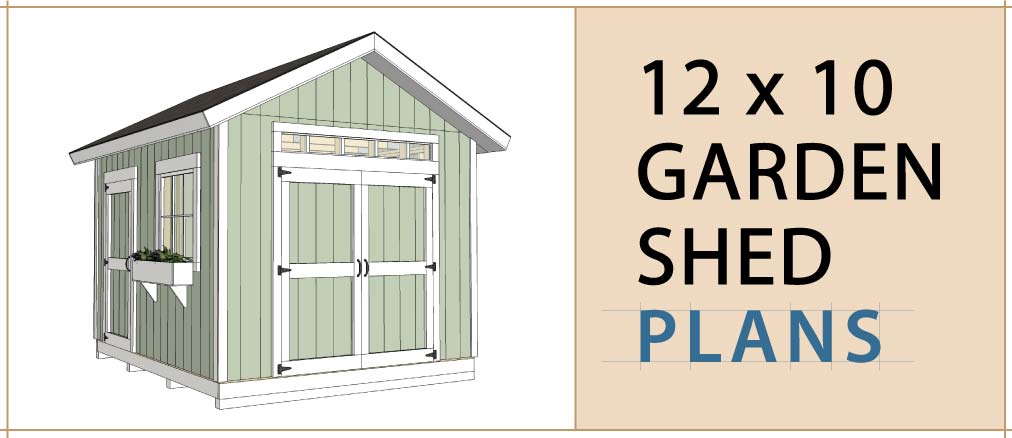Thursday, 7 November 2024
The most affordable 8x10 shed plans to build on a tight budget

So you're dreaming of a backyard shed, a haven for your tools, garden supplies, or maybe even a cozy little workshop. But, the thought of construction costs might be giving you a bit of a budget headache. Don't worry, my friend! You can achieve your shed goals without breaking the bank. This guide will walk you through building an 8x10 shed on a tight budget, with plenty of tips to keep your wallet happy and your building dreams alive.
First Things First: Assessing Your Budget & Goals
Before diving headfirst into the lumber aisle, let's get a grip on your budget. Be honest with yourself about how much you're willing to spend. A basic 8x10 shed can be built for under $1000, but that might require some DIY prowess and scavenging for materials.
Next, consider what you'll be using the shed for. This will determine the features you need. Do you need extra storage space? Are you planning on working in it? Or maybe you want a comfy little hangout spot? The more specific your plan, the better you can tailor your shed to your needs and budget.
Building a Budget-Friendly Shed: The Foundation
The foundation is the bedrock of your shed, and it can make or break your budget.
Option 1: Concrete Slab: This is the most durable option, but it's also the most expensive.
Option 2: Concrete Pier Foundation: A cost-effective alternative. Concrete piers are poured directly into the ground, supporting the shed's floor joists.
Option 3: Wood Deck Foundation: This is the most budget-friendly option, but it might not be as durable as concrete.
If you're aiming for the tightest budget, the wood deck foundation is the way to go. You can even repurpose old pallets for the deck framing. Just make sure they're in good condition and free of any nasty critters.
Framing the Bones of Your Shed: Keeping it Simple
Now it's time to build the frame of your shed. This is where your carpentry skills will shine.
Choosing Wood: Go for pressure-treated lumber for the foundation and floor joists to prevent rot. For the walls and roof, regular framing lumber is sufficient.
Framing the Walls: Use 2x4 lumber for the wall studs. Remember to add extra studs for windows and doors to provide support.
Roof Framing: An A-frame roof is the simplest and most economical option. Use 2x4 or 2x6 lumber for the rafters.
Siding and Roofing: Aesthetics on a Dime
Now we're getting into the fun part: adding the exterior touches.
Siding: You have several budget-friendly options:
T1-11 Siding: A durable and versatile option, often found at affordable prices.
Plywood Siding: A basic and inexpensive choice, but it may require painting or staining.
Vinyl Siding: A low-maintenance option, but it can be pricier.
Roofing: Here again, there are plenty of budget-friendly options:
Shingles: A classic and reliable choice, available in various price ranges.
Metal Roofing: Durable and long-lasting, and often comes with a lower installation cost.
Rubber Roofing: A water-tight and eco-friendly option, though it can be more expensive.
Doors and Windows: Bringing in the Light
No shed is complete without doors and windows.
Doors: A standard pre-hung door can be a great budget-friendly option.
Windows: Opt for simple single-pane windows. You can even find affordable windows at salvage yards.
Finishing Touches: Adding Personality and Practicality
Now, it's time to add the finishing touches.
Insulation: If you plan on using your shed in cooler or warmer months, insulation is a worthwhile investment. Use fiberglass batts or foam board for insulation.
Drywall or Paneling: This will give your shed a finished look and create a clean surface for painting.
Painting or Staining: Choose a paint or stain that will protect your shed and complement your backyard.
Flooring: A simple concrete floor can be cost-effective, but you can also add wood flooring or even rubber tiles.
Tools and Equipment: Making the Most of Your Resources
Let's talk about the tools and equipment you'll need.
Basic Tools: You'll need a hammer, saw, screwdriver, measuring tape, level, and drill.
Power Tools: A circular saw, jigsaw, and drill/driver are helpful but not essential.
Other Equipment: You'll need safety gear like gloves, goggles, and a dust mask.
Don't Forget the Little Things:
Hardware: Don't forget screws, nails, and brackets.
Flashing: This will help protect your shed from water damage.
Caulk: Use caulk to seal any gaps and prevent drafts.
Electrical Wiring (Optional): If you plan to use electricity in your shed, hire a licensed electrician.
Finding Materials: A Treasure Hunt for Savings
To keep your budget in check, get creative with finding materials.
Salvage Yards: A treasure trove for affordable building materials.
Online Marketplaces: Websites like Craigslist and Facebook Marketplace offer excellent deals.
Local Lumber Yards: Look for sales and clearance items.
DIY or Hiring Help: The Cost-Benefit Analysis
Building your own shed is the most cost-effective option, but it requires time, skill, and effort.
DIY: If you're comfortable with carpentry and have the time to build your shed, DIY is the way to go.
Hiring Help: If you lack the time or skills, consider hiring a contractor. This will increase your costs but save you time and stress.
Building Your Shed: A Journey of Satisfaction
Building your own shed is a rewarding experience. It's an opportunity to create a valuable asset for your backyard and a source of personal satisfaction.
Remember:
Plan carefully: A well-planned shed is a budget-friendly shed.
Prioritize your needs: Don't overspend on features you don't need.
Be resourceful: Explore different sources for affordable materials.
Don't be afraid to ask for help: There are plenty of resources available to help you along the way.
So, what are you waiting for? Get out there and build your dream shed!
No comments:
Post a Comment
Note: only a member of this blog may post a comment.